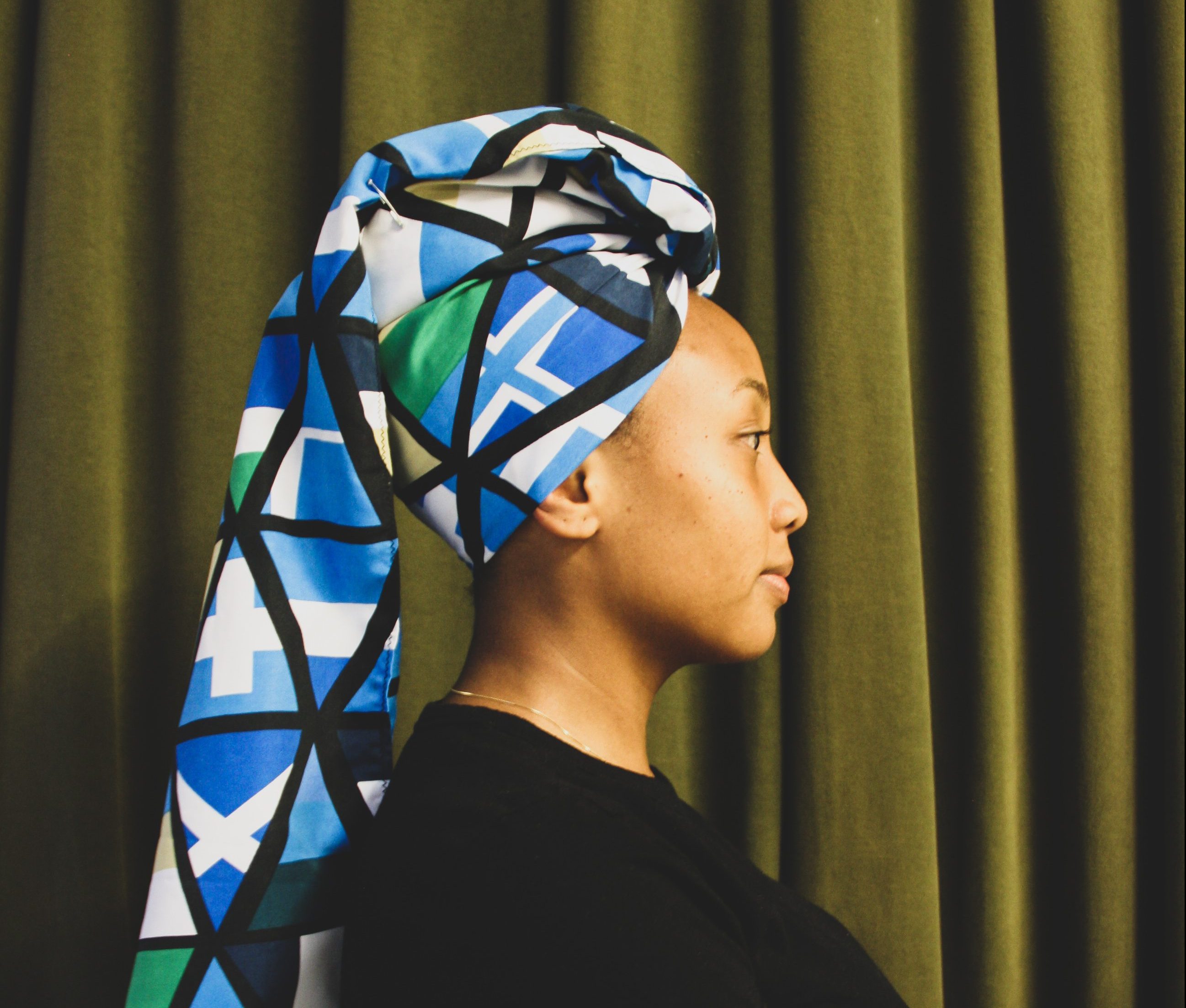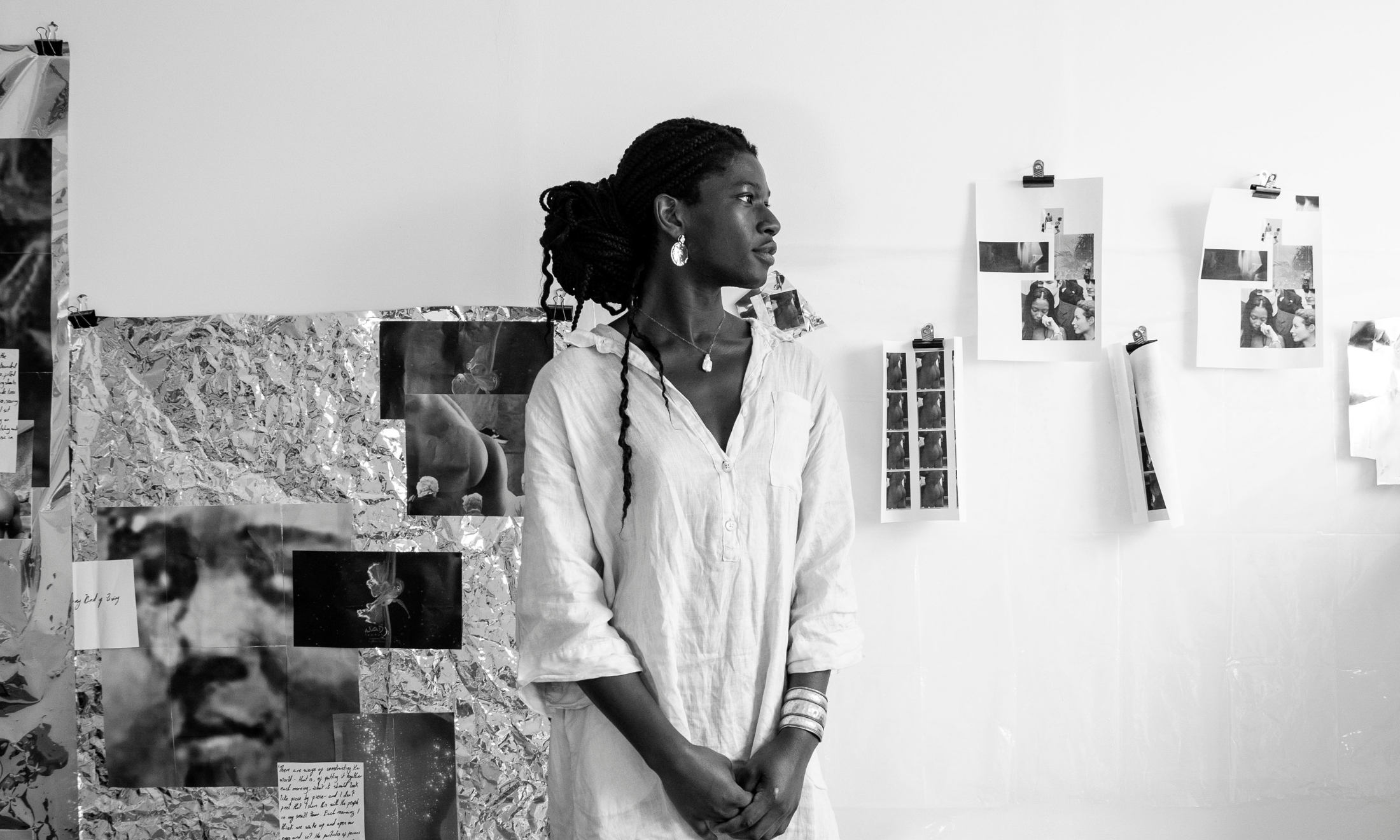
All images by Ethel-Ruth Tawe
With a quick search for ‘turbans’ online, Thaís Muniz, a Brazilian artist and designer from Salvador Bahia, was frustrated by the lack of representation of the AfroBrazilian cultures that upheld the practice. In 2012, she founded the Turbante-se project and has since pioneered research that connects the histories and the re-signification of headwraps in the Afro-Atlantic diaspora. ‘Turbante-se’ is a Brazilian-Portuguese neologism that means ‘turban yourself’. For Thaís, “the headwrap acts as an ancestral symbol to open conversation about self-image, self-love, ancestry, cultural appropriation, racism, art, business, creation, inspiration, and political activism.”
Through workshops, tutorials, and performances via her platform, Thaís documents stories and inspires the daily use of turbans. Their social function and distinction from common headwraps is highlighted by the spiritual aspects of the ancient practice across time, space and context. The Turbante-se project is focused on research, bringing to light the true icons behind afrodiasporic traditions of turban-wearing, while reflecting on legacies and usage today. Thaís’ work is reconnecting people of color with Afro-based aesthetics, generating content, dialogue and joy through her rare insight.
 Her research
Her research
Thaís traces the complex history of turbans and headwraps in the Afro-Atlantic diaspora, from ancient to contemporary times. She examines the early colonial practice of shaving the heads of black slaves in order to eradicate their sense of culture and identity. Ironically, with no understanding of their precolonial significance, headwraps were then assigned as a uniform symbol of oppression. “Originally, these headwraps were given to all genders, but were later exclusively used by women who were required by law in some regions to ‘secure’ their afro hair in these cloths. Women began to explore unique styling, redefining the practice into one that generated a sense of liberty and empowerment,” Thaís explains.
The main reference for turban-wearing in Brazil comes from the Baianas de Acarajé, and practitioners of the Candomblé and Umbanda religions. These syncretised Afro-Atlantic religions combine elements of West African spirituality, indigenous South American Indian practices, and Catholicism. The Baianas de Acarajé (or simply Baianas), are female street vendors dedicated to the traditional role of selling ‘acarajé’ (or àkàrà in Yoruba) and other delicacies of African and Afro-Bahian cuisines. Nowadays the craft is much more widespread, but originally these women were mostly black with a strong identity in African-born religions. The Bahia region of Brazil, where Baianas originate, is home to the largest population of black people outside the African continent.
 “The turban is a part of sacred clothing in the Yoruba and Vodun religions. It serves more than aesthetic function; it is a form of protection, a non-verbal means of communication, to identify hierarchy in the temple and presume an ‘Orisha’,” says Thaís. In Yoruba, orí means ‘head’; while sha roughly translates to ‘guardian.’
“The turban is a part of sacred clothing in the Yoruba and Vodun religions. It serves more than aesthetic function; it is a form of protection, a non-verbal means of communication, to identify hierarchy in the temple and presume an ‘Orisha’,” says Thaís. In Yoruba, orí means ‘head’; while sha roughly translates to ‘guardian.’
For Thaís, reference to wearing a crown or ‘queening’ is in no way accrediting monarchy. A queen is a leader of their own destiny, reclaiming strength and self-determination over their own lives. In the Yoruba religions, the turban therefore serves as physical and metaphysical protection of the sacred space that is the orí; also known as the crown chakra in Buddhism. “It will wrap my soul, protect my energy and inspire many people to understand what resistance is”, says Thaís. The parallels of the practice and pantheons of god/ess across the globe as seen in ancient Greek and Roman mythology for example, are believed to be the same god/ess travelling the world.
The Turbante-se Workshops
The workshop begins with a short lecture followed by a fluid and friendly practical, exploring beauty and deconstructing misunderstandings of the crown. Thaís leads the room into a magical experience showing practical ways of tying over 10 DIY headwrap styles, amongst the innumerable forms she encourages attendants to explore as a means of expression. All headscarves are also available for sale on site. Throughout the session, she references her own research and documentation of the Ilê Aiyê group, and other crucial icons including a famous afro-hair stylist and dread-maker in Salvador, Brazil.
 Thaís further discusses the line between cultural appreciation versus appropriation, referencing case studies in contemporary Brazilian media. She recounts instances across cultures where black bodies have been robbed of dignity and well-deserved credit. While many have never heard about the Baianas, they are often more familiar with white public figures who appropriate the aesthetics and styles of the Candomblé sisterhood, most famously the early 20th century singer Carmen Miranda. These figures have been able to validate and represent Afro-Bahian culture amongst many others throughout history. For Thaís, “they represent the massive damage caused by cultural appropriation within the legacy of Brazilian culture.” She provides insight into where she envisions this conversation leaping forward into a productive space that shares and celebrates cultures, while prioritising and appreciating the contributions of people of color. Building knowledge and correcting false histories allows PoC to tell our own stories and avoid them being rewritten or appropriated.
Thaís further discusses the line between cultural appreciation versus appropriation, referencing case studies in contemporary Brazilian media. She recounts instances across cultures where black bodies have been robbed of dignity and well-deserved credit. While many have never heard about the Baianas, they are often more familiar with white public figures who appropriate the aesthetics and styles of the Candomblé sisterhood, most famously the early 20th century singer Carmen Miranda. These figures have been able to validate and represent Afro-Bahian culture amongst many others throughout history. For Thaís, “they represent the massive damage caused by cultural appropriation within the legacy of Brazilian culture.” She provides insight into where she envisions this conversation leaping forward into a productive space that shares and celebrates cultures, while prioritising and appreciating the contributions of people of color. Building knowledge and correcting false histories allows PoC to tell our own stories and avoid them being rewritten or appropriated.
Thaís’ passion runs deep with her practice of turban-wearing and her research into decolonizing histories that have been attemptedly erased. In her humble glory she says: “Here I am, on behalf of all the amazing women who paved the way for me. I want to talk about all of them, to make sure their names are heard. I’m here to discard any association with the subalternation or connotations of subservience of our crown, and I want my work to be part of this re-connection in many people lives.” Rightfully, her energy is infectious and as magical as her work.
An iconic Turbante-se print coming soon
Xirê (pronounced: she-rrrê) is a Yoruba word that signifies a celebration of the salutations, dances, food and music used to call-up respective Orishas from each nation. The women featured on the scarves are priestesses from the Candomblé religion, also representing the Baianas de Acarajé. They are the fundamental conservers of turban and headwrap usage in Brazil, despite being frequently dismissed and demonized. Thaís designed the Xirê Scarf to highlight the beauty of these traditions, honoring their resilience and presence.
 The Xirê scarves will soon be available for sale, and are tentatively scheduled for a London launch event around September 2018. Turbante-se has an online shop featuring Thaís’ collections of curated patterns and textiles from around the world. The project and workshops have traveled wide accepting invitations to a range of festivals, conferences, street parties, and unique events in major cities including Los Angeles, London, Amsterdam, Dublin, Brussels, Barcelona, Rio de Janeiro, and beyond.
The Xirê scarves will soon be available for sale, and are tentatively scheduled for a London launch event around September 2018. Turbante-se has an online shop featuring Thaís’ collections of curated patterns and textiles from around the world. The project and workshops have traveled wide accepting invitations to a range of festivals, conferences, street parties, and unique events in major cities including Los Angeles, London, Amsterdam, Dublin, Brussels, Barcelona, Rio de Janeiro, and beyond.








